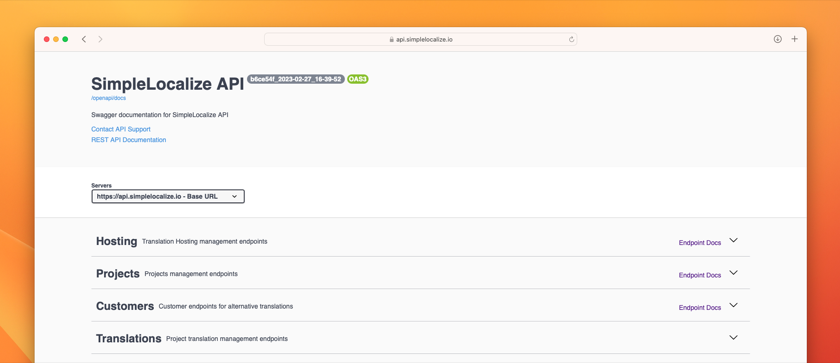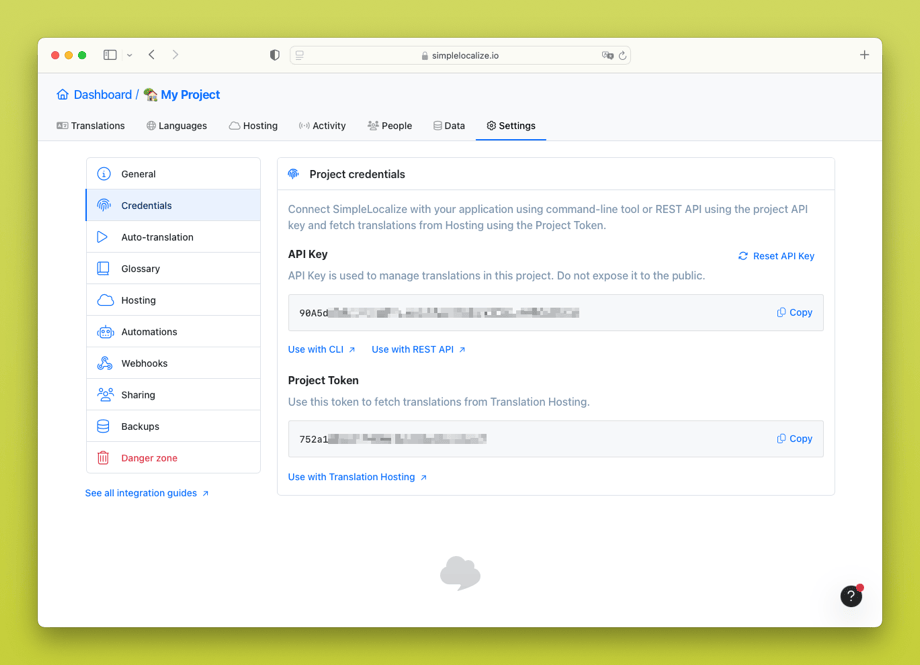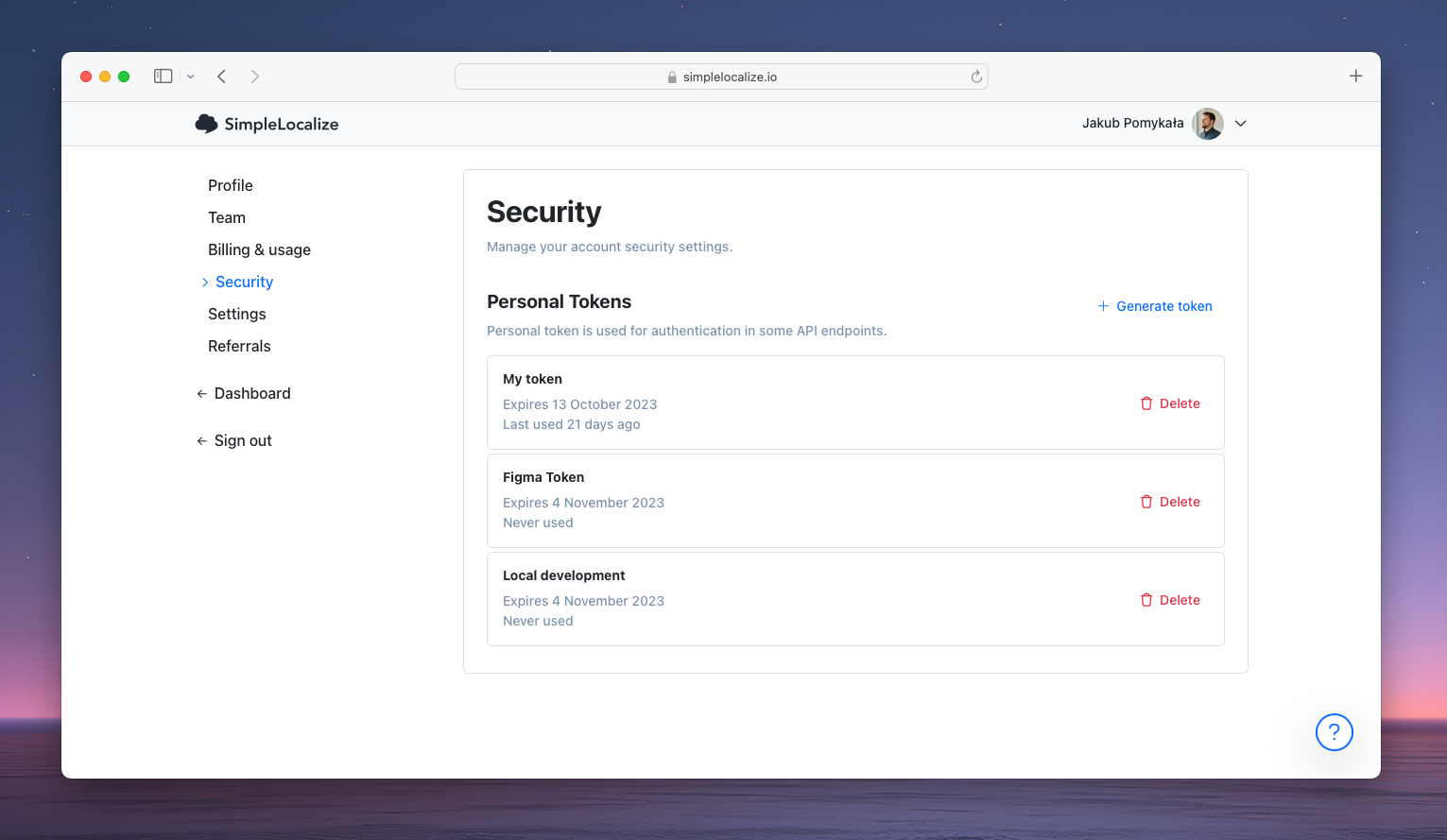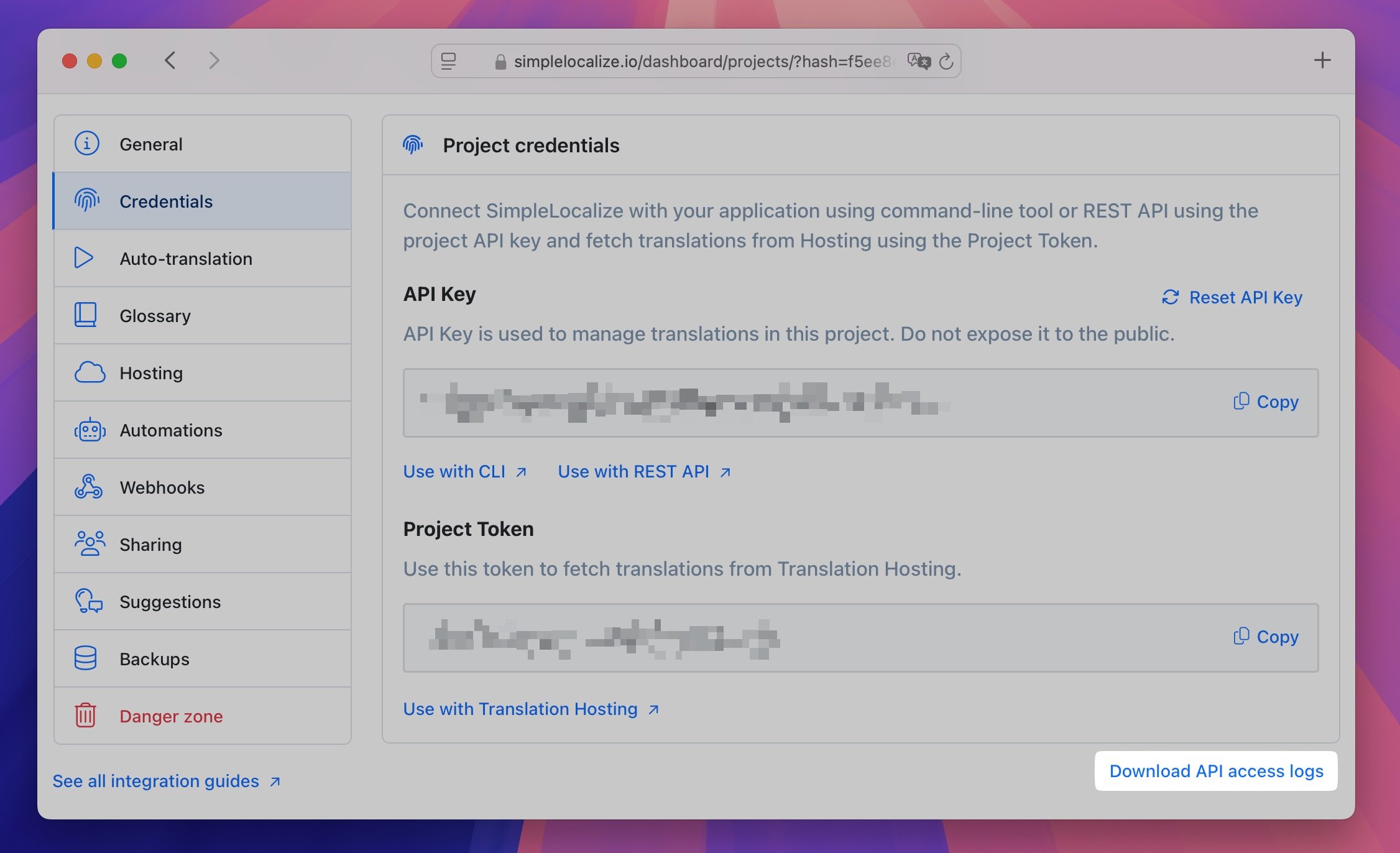SimpleLocalize API gives you an ability to create your own integrations. API provides an endpoint to create, update, read, and delete translations. Optionally, you can import translations and export translations.
OpenAPI Specification
SimpleLocalize API is described with OpenAPI 3.x Specification and can be used to generate client libraries for your favorite programming language or import to REST Client, e.g.: Postman or Insomnia. We also provide a Swagger UI to test the API.

API authorization
Each request which adds or updates the translation data needs to be authorized.
Every request sent to such endpoint needs to have X-SimpleLocalize-Token header with API Key value.
The API Key can be found in the 'Settings > Credentials > API Key'.

Please note that the API Access is rate-limited, and you should not use it to fetch translations for every end-user. Use Translation Hosting instead.
Personal Tokens
Personal tokens are used to authorize requests to the Projects API and you
can generate them in account settings section. Each user can have up to 5 personal tokens. Requests sent to endpoint that requires Personal Tokens need to have Authorization header with the token as a value.

Rate limits
All API endpoints are rate-limited to 60 req/minute (per IP address) and 300 req/minute (per project). Some endpoints have additional limits:
- Export and import endpoints are limited to 60 req/minute (per project),
- Publication endpoint is limited to 10 req/minute (per project),
POST /api/v1/translationsendpoint is limited to 60 req/minute (per project).
If you exceed this limit, you will get a response with 429 HTTP code.
When you receive this response, wait some time and try again.
If you get the same error again, please wait longer between retries (e.g., double the wait time).
Repeat this until the request succeeds.
In some cases, you might get a CORS error if the request is sent from the browser,
because OPTIONS requests are also rate-limited.
Cross-Origin Resource Sharing (CORS)
SimpleLocalize API supports CORS for all API endpoints, so you can integrate the API with tools like Figma or other web applications that make requests from the browser.
Request blocked
We may block requests that are considered harmful, e.g., requests that are too frequent, too large, or they come from the publicly available environments that exposes your API Key, and it shouldn't be there.
API access logs
You can export the last 1,000 requests made to the API from the project settings section. Please note that it may take up to 5 minutes for your request to appear in the exported file. Exporting API logs is available only to the project owner.
